Harvard Mk.II/IIA/IIB
The British Commonwealth
Air Training Plan
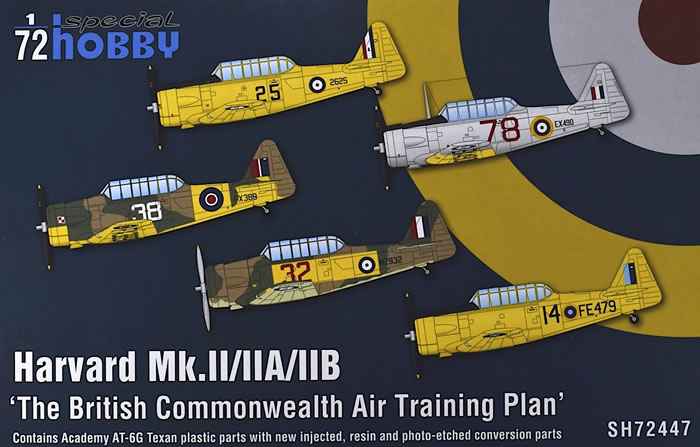
Special Hobby, 1/72 scale
S
u m m a r y : |
Description and Item No.: |
Special Hobby Kit No. SH72447 - Harvard Mk.II/IIA/IIB The British Commonwealth Air Training Plan |
Contents and Media: |
41 parts in grey styrene (not all are used), 9 in clear, 6 in resin, one PE fret (harnesses and site), and one decal sheet with markings for 5 airframes. |
Price: |
£12.17 Plus Shipping from Hannants |
Scale: |
1/72 |
Review Type: |
First Look |
Advantages: |
The kit incorporates the well-known Academy T-6G kit with additional resin, clear styrene, PE, and decals to make an accurate Harvard Mk.II. |
Disadvantages: |
The rear of the fuselage will have to be modified to fit the Harvard rear canopy. The starboard fuselage baggage compartment door will have to be removed. |
Recommendation: |
This is a great adaptation of the Academy kit, but the T-6 family is difficult and there are tons of small detail differences that can catch the modeler by surprise.. |
Reviewed by Jim Bates

We all have our fantasies. Mine often involved radial engines and large propellers…and while types such as the Avenger, Corsair, Spitfire and Hurricane filled my youthful dreams, so did a yellow aircraft that seemed ubiquitous in 1970s Ontario. Even though the RCAF had retired the Harvard in 1965, there was one at the local airport, quite a few more down the road with the Canadian Warplane Heritage in Hamilton, and even a little further down the road in Woodstock, Ontario.
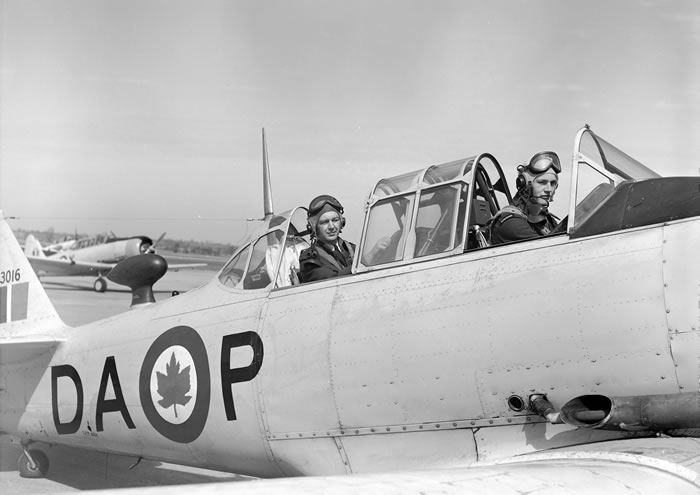
It had everything that an aviation obsessed youth would want in an airplane. It made lots of noise, it had a radial and a large framed canopy, a beautiful wing shape, combined with a somewhat chunky fuselage, and often was painted yellow with big maple leafs.
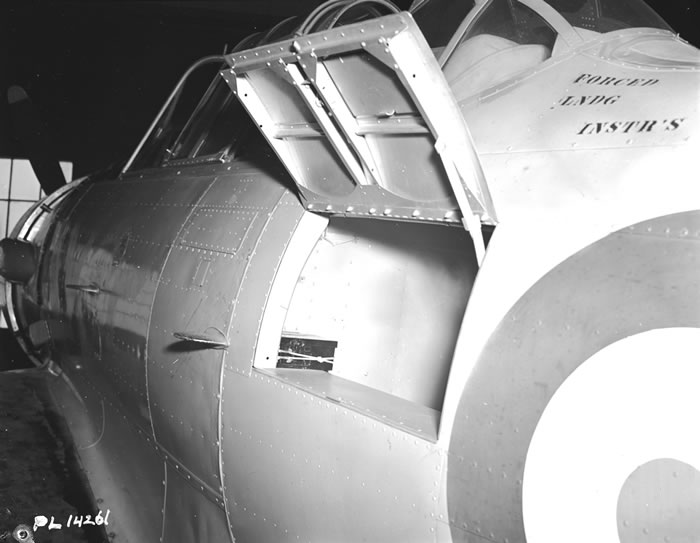
I was captivated. Its shape was imprinted upon me. Hey, I’d love to fly the other types listed above, but those weren’t airplanes that an average private pilot could realistically get a chance to fly. I got lucky and got a few chances later in life to fly the type, and while my formation work was subpar, the Harvard fulfilled many of my aviation dreams.
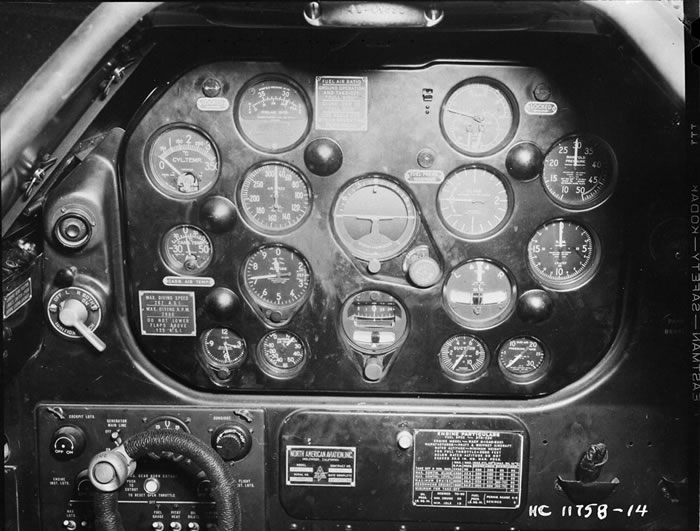
The Harvard was a derivative of the North American NA-16 which first flew in 1935, in Maryland of all places. North American had high hopes for their design, but I’m not sure they could even imagine that the NA-16 would lead to a family of aircraft that would receive the tag as “the pilot maker.” At least in the western world, that wasn’t hyperbole for military aviators from the late 30s until the final aircraft were retired by South Africa in 1995.
The Devil is in the Details
SNJ? AT-6? T-6? Harvard? Why so many names for the same airplane? Well, when you make over 15,000 copies of an aircraft everyone is going to give it their own name. To be as simple as possible the US air force called the AT-6 (wartime) and T-6 (postwar) the Texan. The US Navy called it the SNJ, and the Commonwealth decided upon Harvard. But, as they say, the devil is in the details. A South African Harvard could be a RAF Havard Mk. II, an SNJ, or a T-6. They called them all Harvards. So what is a Harvard Mk. II? Again, it depends on the details. I am going to focus on the Royal Canadian Air Force Harvard IIs in this review, but even then do you mean an NA-66, NA-75, NA-76 or NA-81? An AT-16 or a Noorduyn Harvard IIB? All had slight detail differences.
The Harvard in Scale
In 1/72, there has been only one Harvard kit prior to this Special Hobby release and that was a 1965 release by Airfix. While it was called a Harvard, it still featured the shorter T-6 canopy, though a long exhaust was provided. All other T-6s in 1/72 have been T-6Gs. The first was a Hawk kit in 1955. The shape is pretty good, but there is no detail and the stars and bars are engraved into the plastic. A new T-6G kit was issued by Heller in 1978 and I’ve built this kit a few times over the years. The Heller issue had some fantastic box art, and the plastic was quite nice, though it features raised panel lines. Two issues were that Heller scribed the baggage door on both sides of the fuselage and for some reason did not provide a full instrument panel for the rear cockpit. Academy joined the scene in 1998, with a a new tool T-6G, but this kit was certainly “inspried” by the Heller kit. Finally, Hobby Boss issued an Easy Assemble T-6G in 2007. This kit appears to be “inspired” by the Academy kit…so a copy of a copy.
Those of us that wanted to build a true RCAF Harvard were left with our Heller and Academy kits and had to overcome our fears of vacuform canopies. Thankfully, those days are over.
The Special Hobby Harvard IIB
Unfortunately, Special Hobby has not given us a new-tool Harvard IIB. But, they have taken the best T-6G on the market and given the modeler new plastic and resin parts to create a Harvard II; an in-box conversion, so to speak.
The Academy T-6G consists of three sprues of grey plastic and one of clear.
The molding is crisp and even after all these years there isn’t any flash on the parts. The scribing is perfect, and better than seen on quite a few kits released this year.
The canopy parts are crystal clear, but only the windscreen and landing light covers will be used.
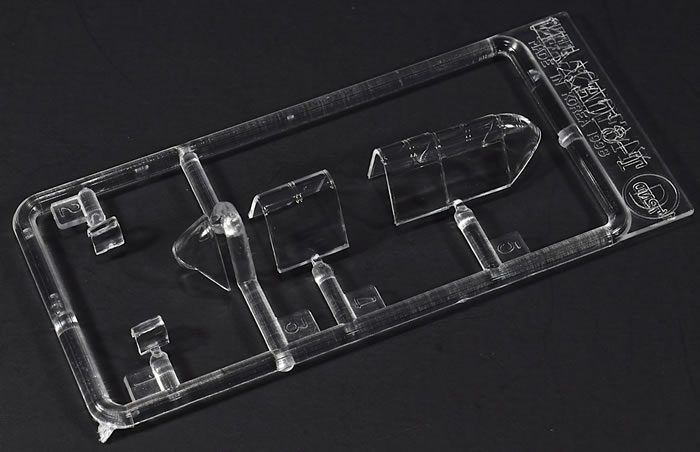
I’ve built the Academy T-6G in the past and it is a nice kit that goes together well. The only real issue I had was that I thought the engine lacked detail and replaced it with an Aeroclub white metal version. Upon revisiting the kit for this review, I’m not sure it is necessary. Academy was quite kind when they tooled the kit, adding various scoops, aerials, and antennas, including the ADF housing used on the Harvard 4.
As I stated above, this kit was inspired by the Heller kit, as it repeats the error of the baggage door on both sides of the fuselage. But outside of leaving out the weapons and the ADF “football,” the Academy kit improved upon the Heller kit by providing the cowling as one part, adding additional detail to the cockpit and generally taking advantage of 20 years of improvement of injection modeled technology.
Special Hobby has added three new canopy sections; one for an AT-6F/SNJ, one for a Harvard II, and one for an AT-6A/D. Unfortunately, for those that wish to model their canopy open, the rear cockpit sliding cover is molded shut. The new canopies are beautifully molded, but one will need to cut part of the fuselage to fit the Harvard canopy.
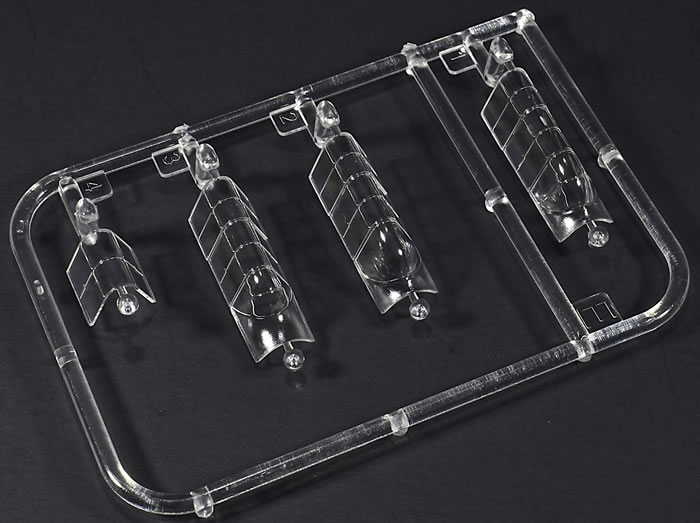
Additionally, Special Hobby has provided a tiny sheet of photo etch seatbelts and a ring and bead sight for the RNZAF option.
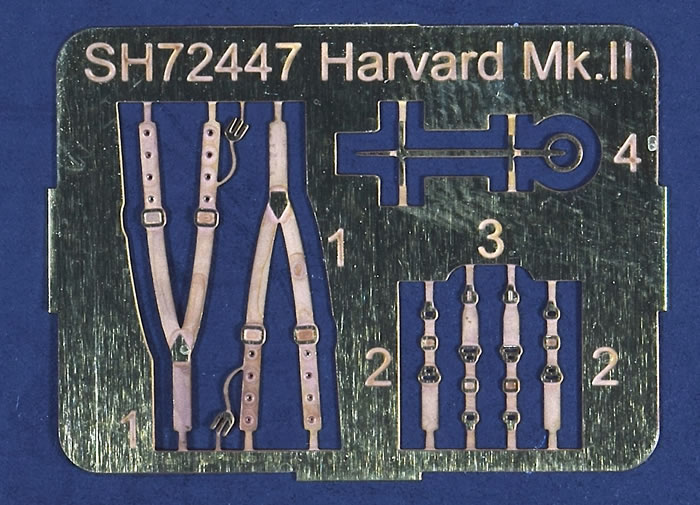
The resin consists of two spade grips, a connector for the two control columns, a twin Venturi, a cranked pitot tube, and the important long exhaust. All the resin parts look great, but getting the pitot tube off the connector will be interesting!
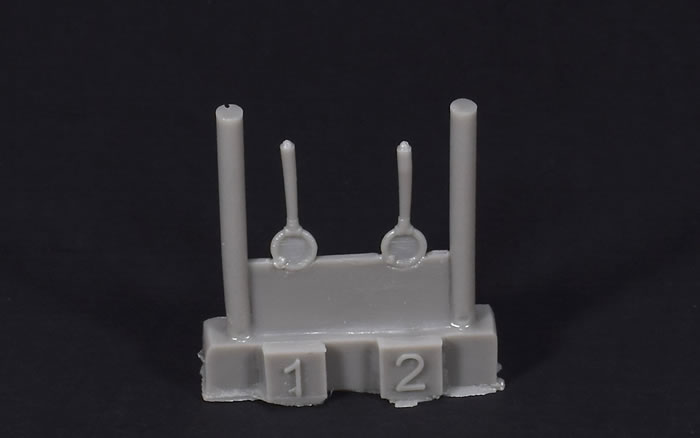
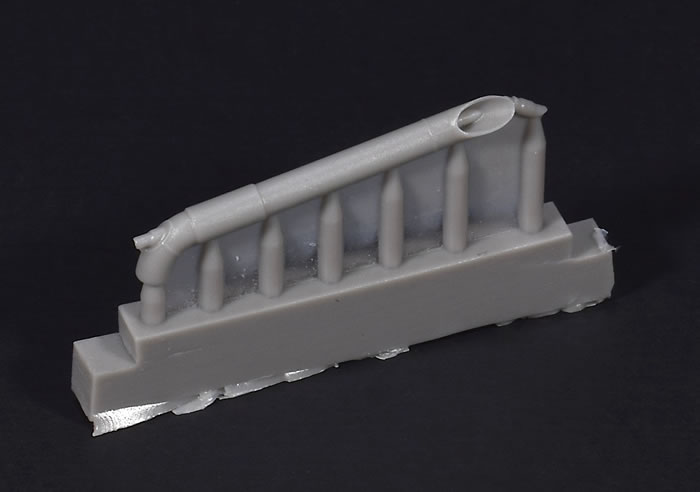

Finally, a decal sheet (by Special Hobby) is included and provides markings for one RCAF Harvard, two RAF Harvards (one with Polish markings), a South African Harvard, and a Royal New Zealand Air Force plane.
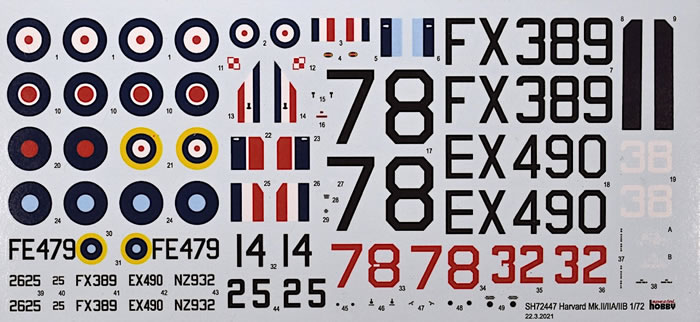
The decals are all well printed and look great on the sheet. (Note that the South African Harvard has the short AT-6 canopy. This is because this was a batch of aircraft originally intended to be AT-6Cs for the US military but were passed to the RAF and in this case then to the SAAF.)
The Devil is in the Details Mk. II
Let’s assume that one wishes to build the provided RCAF aircraft Harvard Mk. IIB 2625 of 34 Service Flying Training School at RCAF Medicine Hat. This would be a North American built NA-66. It would be correct to fit the twin Venturi and the cranked pitot. Special Hobby suggests using Interior Green, but the RCAF NA-66s were painted silver inside. (They were repainted in a Bronze Green when overhauled by Noorduyn post war.) One warning is that no RCAF Harvard was ever fitted with a spade grip in the back seat. I believe this was due to the rear control column being removable and not having a spade grip made it easier to store in the cockpit. Also, most likely, the landing gear doors were removed by the time the aircraft was trading students.
A few other items of note: NA-66s had X shaped rollover braces, not the single brace provided in the kit. This is correct for a Harvard 4 and a T-6G. The baggage door on all RCAF Harvards is square, not the more stylized shape of the T-6G provided in the kit. (And don’t forget to remove the door on the other side of the fuselage.) Special Hobby directs the modeler to paint the four lights under the fuselage, but these are not a feature of RCAF Harvards. Additionally, the Harvard II did not have the twin lights on the bottom of the rudder; this too was a T-6G and Harvard 4 feature.
I hope that this review does not come across as too didactic and critical. I am overjoyed to have a reasonable Harvard IIB out of the box. Heck, I ran out to Skyway Hobby as soon as I heard it was in stock. This is a great adaptation of the Academy kit, but the T-6 family is difficult and there are tons of small detail differences that can catch the modeler by surprise.
Jim Bates Review kit provided by reviewer.
For more on this review visit Modelpaintsolutions.com
All historical photos courtesy of the Canada. Dept. of National Defence/Library and Archives Canada.
Text and images copyright © 2020 by Model Paint Solutions.
Text and Images Copyright © 2021 by Jim Bates
Page Created 20 May, 2021
Last updated
21 May, 2021
Back to HyperScale Main Page
Back to Reviews Page
|
Home
| What's New |
Features |
Gallery |
Reviews |
Reference |
Forum |
Search